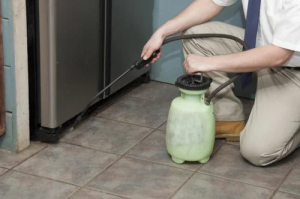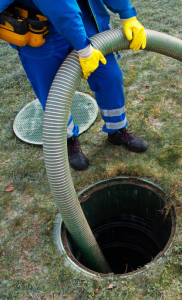Perth Insulation can reduce health problems caused by high indoor temperatures by keeping your space cooler in summer and warmer in winter. It can also help control humidity and protect against mould.
Insulation works by trapping air pockets and slowing the transfer of heat energy. It is most effective when installed in areas that are dry.

There are a wide variety of insulating materials on the market, ranging from bulky fiber materials such as fiberglass, mineral wool and rock and slag wool to rigid foam boards and sleek foils. The insulating properties of different materials vary and depend on how well they resist convective and conductive heat flow.
Rigid foam insulation boards are a popular option for new construction, as they help to increase the energy efficiency of homes by creating a more effective barrier against thermal leakage. The insulation boards are available in a range of thicknesses, with the R-value increasing at a set rate as the material thickness increases.
This type of insulation is available in a variety of forms, including blanket batts and rolls or sheets that are trimmed to fit the wall. It is often treated with chemicals to make it less flammable, and can also be made from recycled content. It has a high R-value per inch, but its performance declines as the material becomes compressed or wet.
Foam board insulation is available in a range of R-values, from the low R-value of expanded or extruded polystyrene (EPS and XPS) to the high R-value of polyurethane and other foams. This type of insulation is often a good choice for do-it-yourselfers as it can be cut to fit around plumbing pipes and electrical outlets. However, it can be difficult to install and must be cut carefully to avoid exposing the underlying structure of the building to moisture and insects.
Structural insulated panels (SIPs) are a recent innovation in timber-framing and post-and-beam construction. The panels, which are essentially two pieces of OSB with a foam core between them, provide strength and insulation for open wall space that might otherwise be empty. These panels can be installed by professional installers, but do-it-yourselfers who have some experience in framed construction may find the project manageable.
Another new product that mixes the building form and insulation in one is insulating concrete forms (ICFs). These are essentially foam blocks with concrete in between, and they provide a high level of thermal resistance for poured walls. They are typically installed by professionals in new construction, but can be used for new poured wall insulation in existing homes as part of a remodel.
Conduction
Insulating materials reduce heat transfer by slowing the flow of conductive energy. Conductive energy is a form of thermal energy that transfers through the particles in solids. Insulators like fiberglass, mineral wool and foam board slow the flow of conductive energy by creating a barrier between surfaces that would otherwise be in direct contact with one another.
Often, a mixture of different types of insulation is used to combat all methods of heat transfer. The combined R-value of the layers used will determine how well the insulator performs. The higher the R-value, the better the insulator.
In addition to slowing conductive energy, insulation can also help keep the contents of the home or building warm. This is accomplished by trapping air in pockets within the insulator. This is the same concept that cats fluff up their fur and birds spread out their feathers when cold, reducing the amount of thermal energy they lose by preventing air from escaping.
The ability of insulating materials to slow or stop the flow of electrical energy is called dielectric strength. The higher the dielectric strength, the greater the insulator’s ability to block electromagnetic waves. Insulators that block electromagnetic waves can prevent interference with electronic devices and equipment, ensuring they work properly.
Another benefit of insulation is that it can protect wires and cables from damage by preventing the transfer of thermal energy. This shields the conductors from moisture, chemicals, UV radiation and mechanical stress that could degrade or reduce their performance and lifespan.
Insulation is an essential component of green construction as it helps to reduce energy consumption and greenhouse gas emissions. In turn, this contributes to a healthier indoor environment, increased comfort levels, and lower energy bills.
Insulation can be found in a wide variety of forms, including batts and rolls, loose-fill, blown-in and spray foam. Each type of insulator has a unique set of properties that are tailored to combat specific methods of heat transfer and environmental impacts. Fiberglass, for example, is available in different thicknesses and densities to match the needs of each job. Cellulose insulation is made from recycled paper that undergoes a borate treatment to resist fire, insects and rodents; it’s then compressed into large bales and blown into walls, floors and ceilings for installation. The insulating properties of cellulose remain intact even when it gets wet, unlike fiberglass, which will degrade and settle if exposed to moisture.
Convection
The primary function of insulation is to reduce the rate at which heat moves through walls, floors, and ceilings. Insulation materials are rated for their ability to resist this flow of heat, and they have different properties that make them suitable for various applications.
One of the most important properties for insulating materials is thermal conductivity, which determines how well they limit convection, radiation, and condensation. Metals are excellent conductors of heat, while low-density materials, such as air or water, are less conductive. Insulation products have a thermal conductivity value that is specific to a particular thickness of material, known as the R-value. R-values vary by type of material, density, and the level of moisture present.
Convection is the way heat circulates through gases and liquids, which is why warmer, lighter air rises in your home, while denser air sinks. Insulation stops this convection by trapping air in pockets that are isolated from each other. Insulation materials with a high R-value have little air movement within them, which improves their insulating capabilities.
Another factor for determining how effective insulation is is its specific heat capacity, which determines how much heat it takes to raise 1kg of the material by 1K (W/m2K). Insulation with a high specific heat capacity has greater insulating capability because it can retain more of its own heat and requires more energy to warm.
All insulators depend on stopping 3 mechanisms of heat transfer – conduction, convection and radiation. The best insulators stop all three.
The strands in mineral wool prevent the heat from conducting through them by creating a barrier of thin fiber walls, which makes it more difficult for heat to move in that direction. This is similar to the effect that cats’ fur or birds’ feathers have on the loss of heat energy by reducing conduction.
The R-value of mineral wool is also dependent on the thickness and density of the material, as well as moisture accumulation and temperature variations. It is essential to carefully consider these factors when deciding on the best insulation for your needs.
Vapor Barriers
Vapor barriers (also known as vapor retarders) stop water vapor from passing through walls, ceilings and floors. They are typically thin plastic films that perform as a moisture barrier when applied to the interior side of an insulation product. These materials are rated by their permeability, which is the rate at which water vapor passes through the material. The higher the permeability rating, the more effective a vapor barrier.
Vapor barrier ratings vary by climate, wall assembly type and building envelope materials. For example, a Class I vapor barrier is recommended for colder climates that experience high summertime moisture loads, while Class II vapor barriers are ideal for warmer regions with lower wintertime humidity levels.
Moisture in a home or commercial building can cause mold, mildew and other forms of moisture-induced damage that require expensive repair work. In addition, excess moisture can also lead to poor air quality and create a breeding ground for bacteria that can affect the health of those inside the building.
A vapor barrier can reduce the amount of moisture in a building and prevent it from damaging the structural components, insulation and wood framing. This can improve the comfort of those living or working inside the structure, as well as save energy costs by preventing heat loss due to condensation in the insulation and other areas of the building.
Some builders use the terms vapor barrier and moisture barrier interchangeably. However, there are subtle differences between moisture and vapor barriers that are important to consider. Moisture barriers block liquid water and vapor, while vapor barriers restrict moisture only. Some products, like CertainTeed’s MemBrain Smart Vapor Retarder & Air Barrier Film, can serve as both a moisture barrier and vapor barrier, depending on the climate and permeance rating needed.
A vapor barrier is often installed in the crawl space beneath a home to help control moisture problems that can lead to mold, mildew and fungus. It can also help improve the overall performance of a home by keeping crawlspace temperatures stable and improving the air quality throughout the house.








